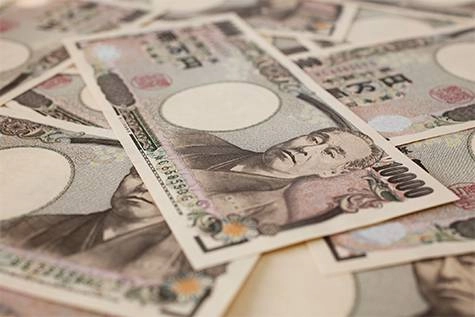-
- پلتفرمهای معاملاتی
- اپلیکیشن PU Prime
- MetaTrader 5
- MetaTrader 4
- PU Copy Trading
- تاجر وب
- پی یو سوشل

Key Takeaways:
*Diverging central bank paths persist, with Fed officials holding a hawkish line while the BoJ remains cautious amid weak domestic growth.
*Japan’s Q1 GDP contraction and soft data tone down rate hike bets, with markets now pricing in a slower BoJ normalization path.
*Resilient U.S. yields and sticky inflation are lending support to the dollar, keeping USD/JPY biased higher despite fragile risk sentiment and haven demand.
USD/JPY held steady this week as traders weighed contrasting policy paths between the Fed and Bank of Japan against a backdrop of fragile global sentiment and simmering geopolitical tensions. While dollar strength was underpinned by sticky U.S. inflation and a modest uptick in jobless claims, the yen struggled for direction amid signs of domestic weakness and limited conviction from the BoJ ahead of its June 14 meeting.
Adding to the policy divergence narrative, preliminary data showed Japan’s economy contracted 0.5% in Q1, led by soft household consumption and weaker exports. A downward revision would reinforce concerns that demand-side pressures remain tepid, making it harder for the BoJ to justify further tightening even as core CPI hovers above 2%. Traders now see only a 50% chance of a BoJ rate hike by September—down sharply from earlier expectations.
Meanwhile, U.S. yields found renewed support after stronger-than-expected ISM Services prices paid data and persistent inflation expectations raised doubts over near-term Fed easing. Though Fed officials have pushed back against rate cut bets, the market remains sensitive to any dovish tilt, especially if upcoming CPI or sentiment data miss the mark.
Geopolitics offered little relief. Hopes for U.S.–China dialogue ahead of a potential Trump-Xi call did little to offset trade anxiety, while the broader carry trade environment remained fragile amid volatility in EMFX and risk assets. The yen’s haven appeal has yet to fully materialize, though a break in U.S. exceptionalism—or escalation in trade or Taiwan tensions—could quickly trigger repatriation flows.
USD/JPY remains trapped beneath a descending trendline drawn from the late April highs, with recent price action revealing clear hesitation just shy of the 144.90 mark. Despite a modest rebound from the 142.52 demand zone, the pair has failed to generate follow-through, leaving a long upper wick and reinforcing resistance pressure near the 146.09 horizontal barrier.
This inability to sustain a breakout above the confluence of trend and price resistance suggests a stalling rebound structure. While the pair continues to find support above 143.76, repeated rejections from overhead resistance reflect growing unease among bulls and signal that upward traction may be fading.
Momentum indicators reflect this waning conviction. The Relative Strength Index (RSI) holds just under the 58 level, maintaining a mild bullish tilt but showing signs of flattening after a push toward overbought territory. Meanwhile, the MACD line is converging toward the signal line, with the histogram’s recent strength showing early signs of softening—raising the risk of a bearish crossover if momentum fails to reignite.
Resistance Levels: 146.10, 148.10
Support Levels: 143.80, 140.30

Trade forex, indices, metal, and more at industry-low spreads and lightning-fast execution.
ہمارے پریشانی مفت عمل کے ساتھ PU پرائم لائیو اکاؤنٹ کے لئے سائن اپ کریں.
بغیر کسی تکلیف کے اپنے اکاؤنٹ کو وسیع چینلز اور قبول شدہ کرنسیوں کے ذریعے فنڈ کریں۔
مارکیٹ لیڈنگ ٹریڈنگ حالات کے تحت سینٹوں کی تعداد تک رسائی حاصل کریں.